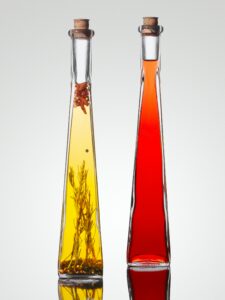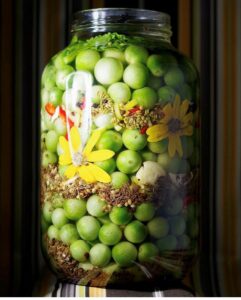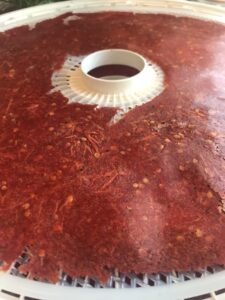
Recently a meme floated through social media promoting clutter-free gifts. Raise your hand if you don’t need more stuff. (I’m in the back row with my hand raised!) Great ideas included gifting an experience (tickets to a favorite event or class,) memberships (in person or digital subscriptions), and DIY goodies like a jar of affirmations, old-fashioned mixed tapes, and consumables are mentioned in this sweet essay from Closed Loop Cooking.
DIY. (Yes! We love this category!) Not everyone loves receiving food gifts, but Lin (family/friend/mentor) actively encouraged a consumable gift exchange. The kids and I would drive over the pass in our ’69 Volkswagen bus with a basket of pickles, jams, and preserves and come home with a cooler packed with frozen venison or elk, salmon, and her amazing zucchini bread. I consider these gifts from the heart.

Before joining OSU Extension, my former occupation was a cheese monger and produce buyer for a small grocery store in SE Portland. The store carried a plethora of local and imported specialty grocery items, perfect for gift baskets. I often heard folks say they could make “that” at home.
Caution: hard to find treats can be tempting to make at home, but may be unsafe. Commercial processing facilities have higher temperatures and processes to preserve foods, and are tested by a process authority for safety.
However, thanks to university research, there are safe options:
Herbs and Vegetables Stored In Oil – Follow these instructions to the letter.

Oil’s oxygen-free environment is perfect for growth of bacteria. For this reason, herbs and vegetables in oil must be stored correctly to prevent botulism food poisoning. (Commercial garlic-in-oil mixtures are acidified to prevent bacterial growth. These products can be stored safely at room temperature.) Safe gift ideas in this publication include:
-
- Dehydrated tomatoes in oil– Acidified for safety and to soften them a bit, they can be stored in oil. Adding herbs or garlic is okay but they will need to be stored in the fridge for 4 days max, or frozen.
- Pickled mushrooms or hot peppers, stored in oil– Pickled mushrooms and chilies in oil must be refrigerated and used within 4 days or frozen for long-term storage unless they have been pickled with vinegar or lemon juice. Pickled mushroom recipe here. Pickled hot pepper recipe here.
- Pesto– Freeze it.
Making Garlic- and Herb- Infused Oils at Home – Follow instructions exactly for a safe product. In a word- Acidify! Flavored olive oil is great w bread, but what about drizzling it over a bowl of rosemary-infused beans, or homemade butternut soup?


Which brings me to Winter squash. In a previous blog post, we talked about food safety issues preserving purees. Because of density issues affecting thorough and consistent heat penetration, it needs to be frozen, but listen, frozen soup is a great gift! (Imagine having a selection of delicious homemade soup in the freezer!) It can also be dehydrated and ground into a powder.
Flavored vinegars– Safe, easy, and fun to make. Vinegar isn’t just for salad dressing, consider making a drinking vinegar or shrub to add to sparkling water or a more adult beverage. Infuse with berries, fruit, herbs, spices, or roots like ginger or turmeric. Get creative!
Finally, as we (rapidly) approach the gift-giving season, please consider taking some intentional time to be kind and patient with yourself and the world around you. It’s not only good for your emotional and mental health, but it’s good for your body too. And as a nod to my friend and former mail carrier, hug your loved ones a little more. Make sure your peeps know you love them.
Until next time, friends… embrace the rain and fruits of the season. Look for more OSU Extension Family and Community Health program information on our Facebook, Instagram, YouTube, website, and newsletter. And please subscribe!
Oregon State University Extension Service offers educational programs, activities, and materials without discrimination based on age, color, disability, gender identity or expression, genetic information, marital status, national origin, race, religion, sex, sexual orientation, or veteran’s status.
Oregon State University Extension Service is an Equal Opportunity Employer.



